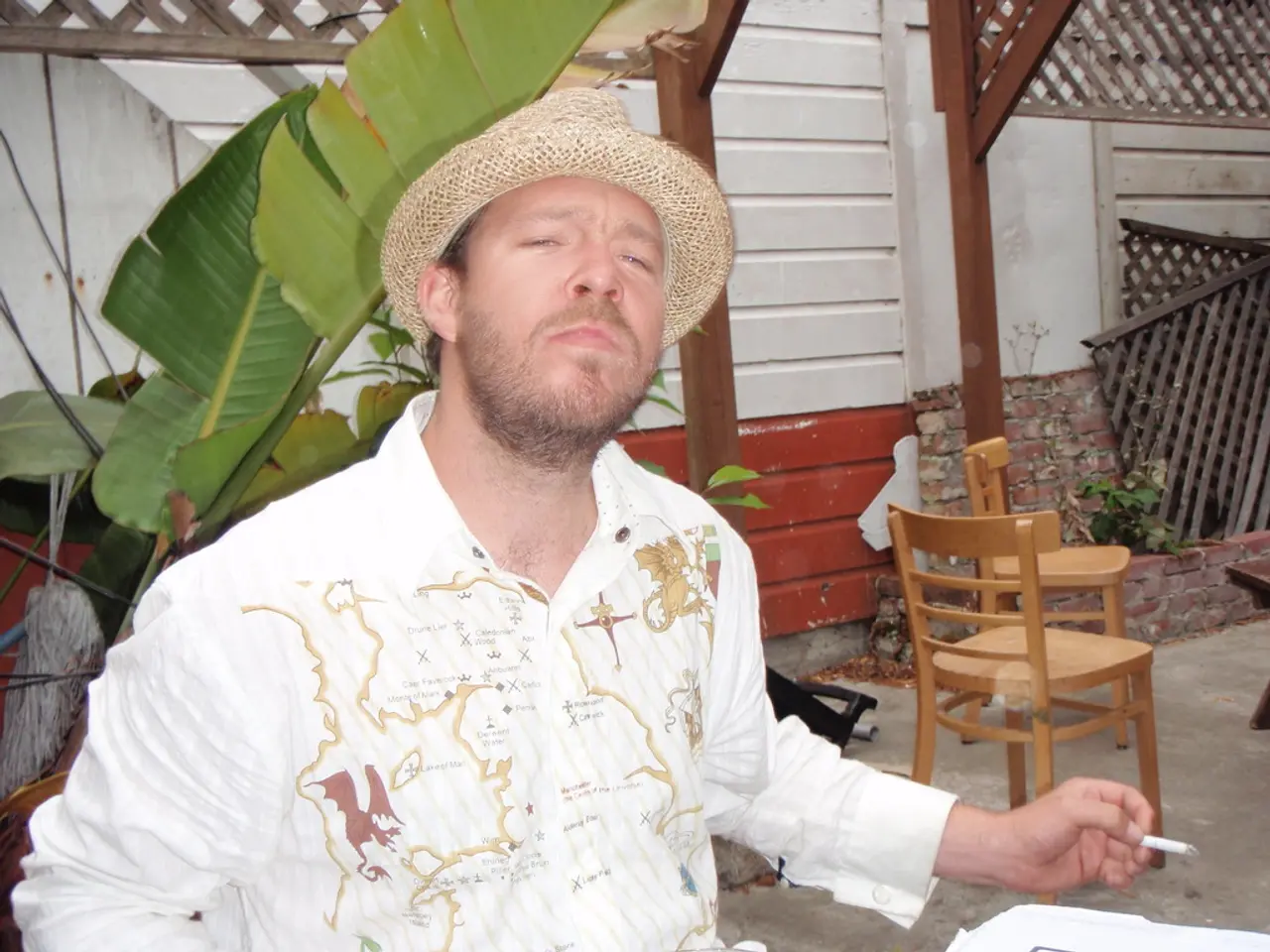Radiation for Lung Cancer: Impact and Additional Details
Radiation therapy is a common treatment option for lung cancer, offering hope to many patients. However, like any medical treatment, it comes with its own set of side effects.
The short-term side effects of radiation therapy for lung cancer commonly include fatigue, skin irritation, nausea, loss of appetite, inflammation of lung tissues (radiation pneumonitis), hair loss, and vomiting. These usually occur during or shortly after treatment[1][4].
Fortunately, these side effects are manageable. Fatigue can be alleviated with rest and energy conservation strategies. Skin problems can be soothed with the use of topical creams and gentle skin care. Nausea and vomiting can be controlled with medications (antiemetics). Loss of appetite can be addressed with nutritional support and counseling. Radiation pneumonitis, a significant concern, can be managed with early detection and treatment using corticosteroids to reduce lung inflammation. Hair loss, usually localized to the treatment area, is temporary[1][4][3].
Long-term side effects can include chronic lung inflammation or fibrosis, persistent cough, difficulty breathing, and less commonly, damage to surrounding organs like the esophagus or heart. Radiation pneumonitis is an important acute complication that can progress to chronic lung issues if not managed[1][3].
Patients should promptly report any side effects to their medical team, who can tailor supportive therapies such as oral medications, topical treatments, and rehabilitation measures to reduce impact and improve quality of life[1][4][3].
It is important for a person to discuss the potential risks and side effects of radiation therapy and chemotherapy with a doctor before starting treatment. In rare instances, radiation therapy to the chest may affect the organs and bones of the chest. Chemotherapy and radiation therapy can cause some similar side effects, and the severity of the potential side effects may be increased when both treatments are undergone[2].
In summary, while radiation therapy for lung cancer may come with short-term and long-term side effects, these are manageable with coordinated medical care. The short-term side effects usually go away within a few weeks after the end of treatment. For those considering treatment, it is essential to discuss the potential risks and side effects with a doctor to make an informed decision.
References:
[1] National Cancer Institute. (2021). Radiation Therapy and Lung Cancer. Retrieved from https://www.cancer.gov/types/lung/patient/radiation-therapy-lung-pdq
[2] American Cancer Society. (2021). Lung Cancer - Radiation Therapy. Retrieved from https://www.cancer.org/cancer/lung-cancer/treating/radiation-therapy.html
[3] Mayo Clinic. (2021). Radiation Therapy for Lung Cancer. Retrieved from https://www.mayoclinic.org/tests-procedures/radiation-therapy/about/pac-20394655
[4] American Society for Radiation Oncology. (2021). Radiation Therapy for Lung Cancer. Retrieved from https://www.rtanswers.org/cancer-type/lung
- Therapy options for non-small cell lung cancer often include chemotherapy, in addition to radiation therapy.
- Science continues to advance, providing new therapies and treatments for various medical conditions, including chronic diseases like cancer.
- During sleep, the body may use proton therapy to repair and regenerate damaged respiratory and digestive health tissues.
- Workplace wellness programs encourage employees to monitor their health status and manage conditions such as cancer, while maintaining a work-life balance.
- Lung cancer patients undergoing radiation therapy may experience eye-health issues, including dryness or redness due to prolonged exposure to beam radiation.
- Regular hearing checks are essential for early detection and management of hearing loss, a potential side effect of some therapies and treatments.
- Health-and-wellness experts emphasize the importance of fitness-and-exercise, sexual-health, and mental-health in maintaining overall well-being.
- Autoimmune disorders, such as rheumatoid arthritis, are associated with premature aging and increased susceptibility to environmental-science factors.
- Climate change contributes to the rise of various chronic diseases, including cancer and respiratory conditions.
- Mental-health issues, like depression and anxiety, can co-occur with cancer and other chronic diseases, affecting a person's mood, sleep, appetite, and overall well-being.
- Men's health advocate discussions should include skin-care, cardiovascular health, and prostate health care.
- Skin-care routines need to address mental-health, hormonal changes, and stress during menopause to prevent skin-conditions related to aging.
- Women's health organizations recommend routine self-examinations for early detection of breast cancer, gynecological cancers, and other medical conditions.
- Parenting experts stress the importance of supporting children's healthy weight management through nutrition, exercise, and emotional well-being.
- Healthy cardiovascular health offers numerous benefits, including improved fitness-and-exercise performance, mental-health, and life expectancy.
- The industry can collaborate with medical organizations to promote workplace-wellness initiatives, addressing mental-health, nutrition, and fitness needs.
- Medicare and Medicaid cover cancer treatments, including therapies and medications, and offer supportive services for patients with cancer and other medical-conditions.
- CBD oil is increasingly being utilized as a potential therapeutic option for managing symptoms related to cancer, neurological disorders, and mental-health issues.
- Home-and-garden improvements, such as insulation and energy-efficient appliances, can contribute to lowering a household's impact on climate change.
- Aging workers are essential to the workforce, as they bring valuable experience, skills, and perspectives to the workplace.
- Fitness-and-exercise regimens may include activities outside traditional gym settings, such as dancing, hiking, and team sports.
- This summer, read books about health-and-wellness, relationship, and personal-finance topics for a well-rounded reading list.
- A nutritious diet rich in whole grains, lean proteins, and fresh fruits and vegetables promotes healthy digestive health and overall well-being.
- Dieticians can provide guidance on weight-management strategies incorporating nutrition facts, portion sizes, and healthy recipe recommendations.
- Aging may lead to changes in skin care and eye-health needs, necessitating adjustments to beauty routines and lifestyle habits.
- Many chemical and environmental factors can contribute to the development of skin-conditions such as psoriasis and eczema.
- Space-and-astronomy enthusiasts are encouraged to learn more about the intersection of science, technology, and our understanding of the universe.
- Cybersecurity professionals work to protect sensitive digital information and ensure data-and-cloud-computing systems are secure and reliable.
- Lifestyle choices, such as quitting smoking and managing stress, can reduce the risk of developing cancer and other chronic diseases.
- Fashion-and-beauty trends often follow broader movements, such as sustainability, inclusivity, and body positivity.
- This weekend, plan a home-cooked meal using organic, locally-sourced ingredients for a experience focused on food-and-drink and quality time with loved ones.




